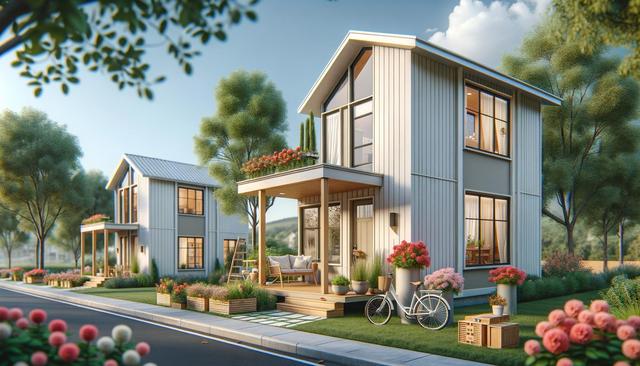
Prefabricated Homes in the USA: Modern, Efficient, and Affordable Living
Understanding Prefabricated Homes
Prefabricated homes, often referred to as prefab homes, are residential structures built off-site in a factory setting and then assembled on-site. This method of construction allows for better quality control, reduced waste, and quicker completion times compared to conventional building methods. In the United States, prefab homes have evolved significantly from their early designs and now offer a variety of modern styles and configurations to suit different needs and preferences.
These homes come in several types, including:
- Modular homes – constructed in sections and assembled on location
- Panelized homes – built with whole wall panels that are transported and installed
- Manufactured homes – built entirely in a factory and transported to the site
Each type offers varying degrees of customization and permanence, allowing buyers to choose a solution that fits their lifestyle, budget, and long-term plans. Prefab homes are no longer basic or uniform; they now include a wide range of designs from compact urban layouts to spacious rural retreats.
Efficiency and Sustainability Benefits
One of the standout features of prefabricated homes is their energy efficiency. Many prefab builders prioritize sustainable materials and environmentally friendly construction practices. Because these homes are built in controlled environments, there is less material waste, and construction timelines are not affected by weather delays, resulting in a smaller carbon footprint.
Modern prefabricated homes often include:
- Energy-efficient windows and insulation
- Solar panel integration options
- Eco-friendly materials such as recycled steel or sustainably sourced wood
These features not only reduce the environmental impact but also help homeowners save on utility bills over time. Additionally, the factory-based construction means tighter joints and better insulation, contributing to improved indoor air quality and overall comfort. For environmentally conscious buyers, prefabricated homes present an attractive path to sustainable living.
Affordability and Cost Control
Affordability is a primary factor driving the popularity of prefabricated homes in the USA. Compared to traditional site-built homes, prefab options generally come with lower price tags due to streamlined production, bulk purchasing of materials, and reduced labor costs. This makes them an appealing choice for first-time buyers, retirees, and families looking to maximize their housing budget.
Cost advantages of prefab homes include:
- Predictable pricing with fewer unexpected expenses
- Lower labor and construction costs
- Shorter build times reducing financing costs
While the upfront costs can vary depending on size, location, and features, the long-term savings on maintenance and energy often tilt the scale in favor of prefab homes. Financing options are also improving, with more lenders recognizing the value and stability of these homes, making them more accessible to a broader range of buyers.
Customization and Design Flexibility
Gone are the days when prefabricated homes were limited to boxy, uniform layouts. Today’s prefab homes offer a wide range of design options, allowing homeowners to tailor their living spaces to fit their unique tastes and needs. From sleek modern aesthetics to cozy traditional styles, the design possibilities are extensive and continually evolving.
Customization can include:
- Open-concept floor plans
- High-end finishes and fixtures
- Smart home technology integration
- Outdoor living spaces such as decks and patios
Many prefab manufacturers work with architects and designers to offer curated design packages or fully customized plans. This flexibility means buyers no longer have to compromise on style or function. Whether it’s a minimalist urban dwelling or a sprawling countryside cabin, prefab homes can be tailored to meet diverse expectations without the prolonged timelines typically associated with custom builds.
Challenges and Considerations
While prefabricated homes offer numerous advantages, it is also important to understand the potential challenges. Zoning laws and building codes vary by state and municipality, which can affect where and how prefab homes can be installed. Additionally, securing land and preparing it for home placement may involve extra steps like utility hookups, foundation work, and site grading.
Buyers should also consider:
- Transportation logistics and associated costs
- Permitting processes and timelines
- Availability of experienced local contractors for assembly
Despite these considerations, many of the hurdles can be managed with proper planning and by working with experienced prefab home providers. In recent years, increased awareness and acceptance of prefab construction have led to more streamlined processes and supportive local regulations, making it easier for homeowners to navigate these initial steps.


